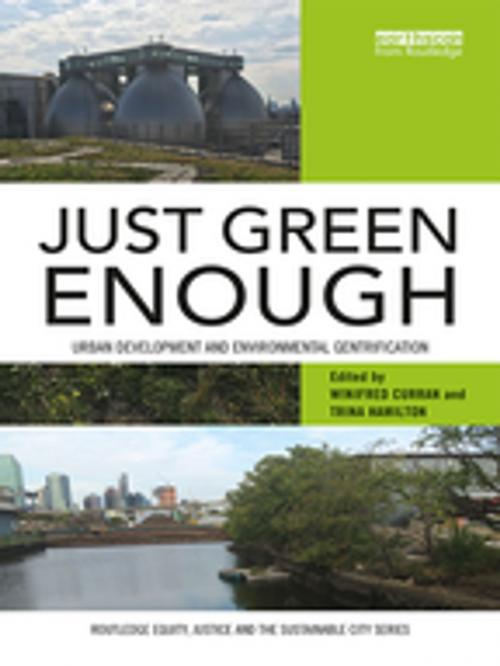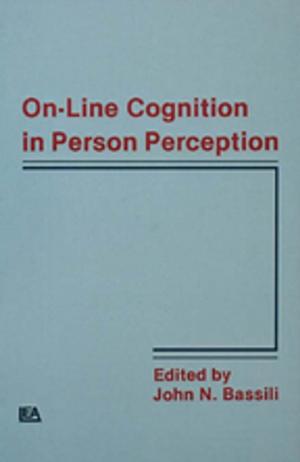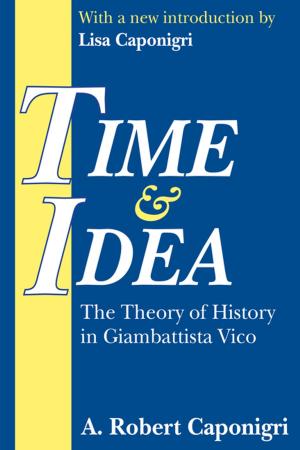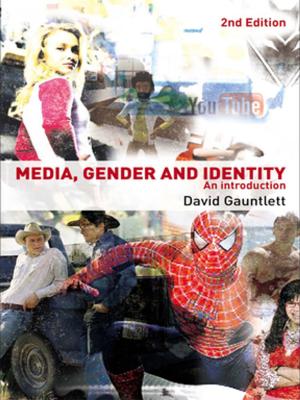Just Green Enough
Urban Development and Environmental Gentrification
Business & Finance, Economics, Sustainable Development, Nonfiction, Social & Cultural Studies, Political Science, Government, Public Policy| Author: | ISBN: | 9781351859301 | |
| Publisher: | Taylor and Francis | Publication: | December 12, 2017 |
| Imprint: | Routledge | Language: | English |
| Author: | |
| ISBN: | 9781351859301 |
| Publisher: | Taylor and Francis |
| Publication: | December 12, 2017 |
| Imprint: | Routledge |
| Language: | English |
While global urban development increasingly takes on the mantle of sustainability and "green urbanism," both the ecological and equity impacts of these developments are often overlooked. One result is what has been called environmental gentrification, a process in which environmental improvements lead to increased property values and the displacement of long-term residents. The specter of environmental gentrification is now at the forefront of urban debates about how to accomplish environmental improvements without massive displacement.
In this context, the editors of this volume identified a strategy called "just green enough" based on field work in Greenpoint, Brooklyn, that uncouples environmental cleanup from high-end residential and commercial development. A "just green enough" strategy focuses explicitly on social justice and environmental goals as defined by local communities, those people who have been most negatively affected by environmental disamenities, with the goal of keeping them in place to enjoy any environmental improvements. It is not about short-changing communities, but about challenging the veneer of green that accompanies many projects with questionable ecological and social justice impacts, and looking for alternative, sometimes surprising, forms of greening such as creating green spaces and ecological regeneration within protected industrial zones.
Just Green Enough is a theoretically rigorous, practical, global, and accessible volume exploring, through varied case studies, the complexities of environmental improvement in an era of gentrification as global urban policy. It is ideal for use as a textbook at both undergraduate and graduate levels in urban planning, urban studies, urban geography, and sustainability programs.
While global urban development increasingly takes on the mantle of sustainability and "green urbanism," both the ecological and equity impacts of these developments are often overlooked. One result is what has been called environmental gentrification, a process in which environmental improvements lead to increased property values and the displacement of long-term residents. The specter of environmental gentrification is now at the forefront of urban debates about how to accomplish environmental improvements without massive displacement.
In this context, the editors of this volume identified a strategy called "just green enough" based on field work in Greenpoint, Brooklyn, that uncouples environmental cleanup from high-end residential and commercial development. A "just green enough" strategy focuses explicitly on social justice and environmental goals as defined by local communities, those people who have been most negatively affected by environmental disamenities, with the goal of keeping them in place to enjoy any environmental improvements. It is not about short-changing communities, but about challenging the veneer of green that accompanies many projects with questionable ecological and social justice impacts, and looking for alternative, sometimes surprising, forms of greening such as creating green spaces and ecological regeneration within protected industrial zones.
Just Green Enough is a theoretically rigorous, practical, global, and accessible volume exploring, through varied case studies, the complexities of environmental improvement in an era of gentrification as global urban policy. It is ideal for use as a textbook at both undergraduate and graduate levels in urban planning, urban studies, urban geography, and sustainability programs.















